
The San Diego Zoo Safari Park is a zoo and safari park in San Diego, California, located in San Pasqual Valley. Opened in 1972, the park operates as a sister location to the San Diego Zoo in Balboa Park; it features a more specific focus on animals from arid environments.
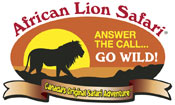
African Lion Safari is a family-owned safari park in Southern Ontario, Canada, located between the cities of Hamilton and Cambridge, located 100 kilometres (62 mi) west of Toronto. Guests may tour seven game reserves, with a total area of about 740 acres, on tour buses or in visitors' own vehicles, where animals roam freely in contained areas. Accompanying the game reserves is a walking section where exotic birds and primates, as well as the park's herd of Asian elephants, are on display.

Taronga Western Plains Zoo, formerly known as Western Plains Zoo and commonly known as Dubbo Zoo, is a large zoo in Dubbo, New South Wales, Australia. It opened to the public on 28 February 1977, to provide more living and breeding space for large animals such as elephants and antelopes which needed more space than was available at the restricted Sydney site. The zoo is run by the Taronga Conservation Society, along with Taronga Zoo Sydney. Western Plains Zoo is located on the Newell Highway in west Dubbo about 5 km from the city.
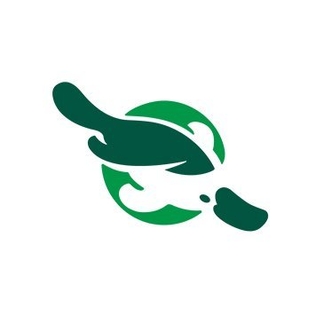
Taronga Zoo is a government-run public zoo located in Sydney, New South Wales, Australia, in the suburb of Mosman, on the shores of Sydney Harbour. The opening hours are between 9:30 a.m. to 4:30 p.m. and 9:30 am to 5:00 pm. Taronga is an Aboriginal word meaning "beautiful view".

Perth Zoo is a 17-hectare (41-acre) zoological park in South Perth, Western Australia. The zoo first opened in 1898 and by 2011 housed 1258 animals of 164 species and an extensive botanical collection. It is a full institutional member of the Zoo and Aquarium Association (ZAA) and the World Association of Zoos and Aquariums (WAZA).
Port Lympne Hotel & Reserve near the town of Hythe in Kent, England is set in 600 acres (2.4 km2) and incorporates the historic Port Lympne Mansion, and landscaped gardens designed by architect Sir Herbert Baker, for Sir Philip Sassoon.

Werribee Open Range Zoo is an African themed zoo in Werribee, about 32 kilometres (20 mi) south-west of Melbourne, Victoria, Australia. It is part of the Zoological Parks and Gardens Board or Zoos Victoria, which also includes Melbourne Zoo, Kyabram Fauna Park, and Healesville Sanctuary. It is situated on approximately 225 hectares and is located on the Werribee River in Werribee Park, adjacent to the Werribee Park Mansion. It was originally agistment land to the Melbourne Zoo. Werribee Open Range Zoo was home to 360 animals of 40 species as of 2021.

Night Safari is the world's first nocturnal zoo, located in Mandai, Singapore. One of the country's most popular tourist attractions, it is one of five Mandai Wildlife Reserve parks, including Singapore Zoo, Bird Paradise, River Wonders, and the upcoming Rainforest Wild Park.
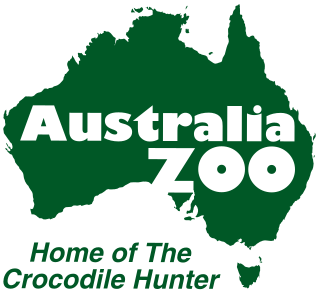
Australia Zoo is a 700-acre (280 ha) zoo in the Australian state of Queensland on the Sunshine Coast near Beerwah/Glass House Mountains. It is a member of the Zoo and Aquarium Association (ZAA), and is owned by Terri Irwin, the widow of Steve Irwin, whose wildlife documentary series The Crocodile Hunter and his family's new show Crikey! It's the Irwins made the zoo a popular tourist attraction.
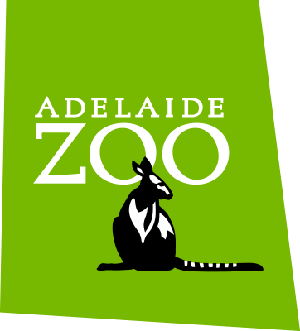
Adelaide Zoo is a zoo in Adelaide, Australia. It is the country's second oldest zoo opening in 1883, and is operated on a non-profit basis. It is located in the parklands just north of the city centre of Adelaide, South Australia. It is administered by the Royal Zoological Society of South Australia Incorporated, which is a full institutional member of the Zoo and Aquarium Association and the World Association of Zoos and Aquariums, and which also administers the Monarto Safari Park near Murray Bridge.
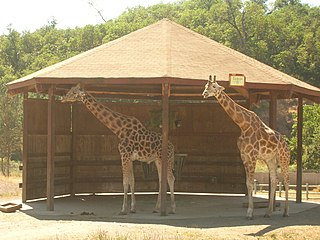
Wildlife Safari is a drive-through safari and zoological park in Winston, Oregon, United States. The park’s main draw is the 615-acre (249 ha) pastures and field enclosures visitors drive their vehicles through, enabling many up-close animal encounters and photo opportunities. These field exhibits, divided into regions such as Africa, Asia and the Americas, mainly feature the park’s ungulate herds and larger hoofed mammals, as well as larger species of birds, including cranes and ratites. Visitors also drive past naturalistic exhibits featuring black and brown bears, cheetahs, lions and tigers.
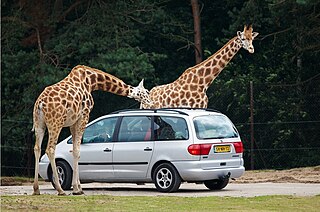
A safari park, sometimes known as a wildlife park, is a zoo-like commercial drive-in tourist attraction where visitors can drive their own vehicles or ride in vehicles provided by the facility to observe freely roaming animals.

Auckland Zoo is a 16.35-hectare (40-acre) zoological garden in Auckland, New Zealand, situated next to Western Springs Park not far from Auckland's central business district. It is run by Auckland Council with the Zoological Society of Auckland as a supporting organisation.

The Tama Zoological Park is a zoo, owned by the government of Tokyo Metropolis, and located in Hino, Tokyo, Japan. The Tama Zoo was opened on May 5, 1958, originally as a branch of the Ueno Zoo. The zoo aims to use its large site – 52 ha, compared to the 14.3 ha of the Ueno Zoo – to show its animals moving in a more free and natural environment.

Orana Wildlife Park is New Zealand's only open-range zoo, sitting on 80 hectares of land, located on the outskirts of Christchurch. It opened in 1976, and is owned and operated by the Orana Wildlife Trust, a registered charity. The aims of the Trust are to provide quality recreational opportunities for local people and visitors to Christchurch; conserve endangered native and exotic wildlife; educate visitors about environmental and conservation issues; and support research relating to endangered animals.
Halls Gap Zoo is a country 53-acre (21 ha) zoo located about 7 kilometres (4.3 mi) from Halls Gap, Victoria, Australia. From the zoo you can see Grampians National Park. It is Victoria's largest regional zoo, holding over 120 native and exotic species.
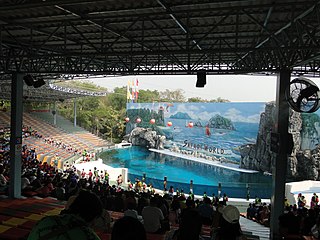
Safari World is a tourist attraction in Bangkok, Thailand that consists of two parks named Marine Park and Safari Park, operated by Safari World Public Limited. The park was opened in 1988 with a total area of 480 acres (190 ha) for its open zoo and 180 acres (73 ha) for its bird park. A major renovation to enhance effectiveness of land use began on 17 April 1989 and its total area developed for the leisure park now consists of an open zoo and a marine park on 500 rai of land.

Malacca Zoo, officially the Malacca Zoo and Night Safari, is a 54-acre (22 ha) zoological park located beside Lebuh Ayer Keroh in Ayer Keroh, Malacca, Malaysia, which hosts more than 1200 animals including 215 species of birds, amphibians, reptiles, mammals. It is the second-largest zoo in Malaysia behind the National Zoo of Malaysia, both were established in 1963. The zoo acts as both a rescue base and an animal sanctuary and was initially owned by the Malacca State Government, but its management was taken over by the Department of Wildlife and National Parks of Malaysia in 1979 and later opened to the public by the then Prime Minister, Mahathir Mohamad on 13 August 1987.

Tasmania Zoo is a zoo located in Launceston, in the Australian state of Tasmania. Situated on 900 acres (360 ha) of old growth native bushland, it is home to the state's largest collection of native and exotic animals. Tasmania Zoo is a fully accredited member of the Zoo and Aquarium Association, working closely with all Australasian zoos, and are involved in various species management programs.
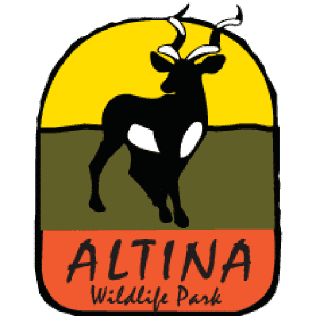
Altina Wildlife Park is a zoo situated in Darlington Point, New South Wales, Australia. The zoo specialises in the conservation of endangered species and features a diverse range of Australian native and exotic animals. It operates horse-drawn cart tours and offers behind the scenes wildlife encounters.





















